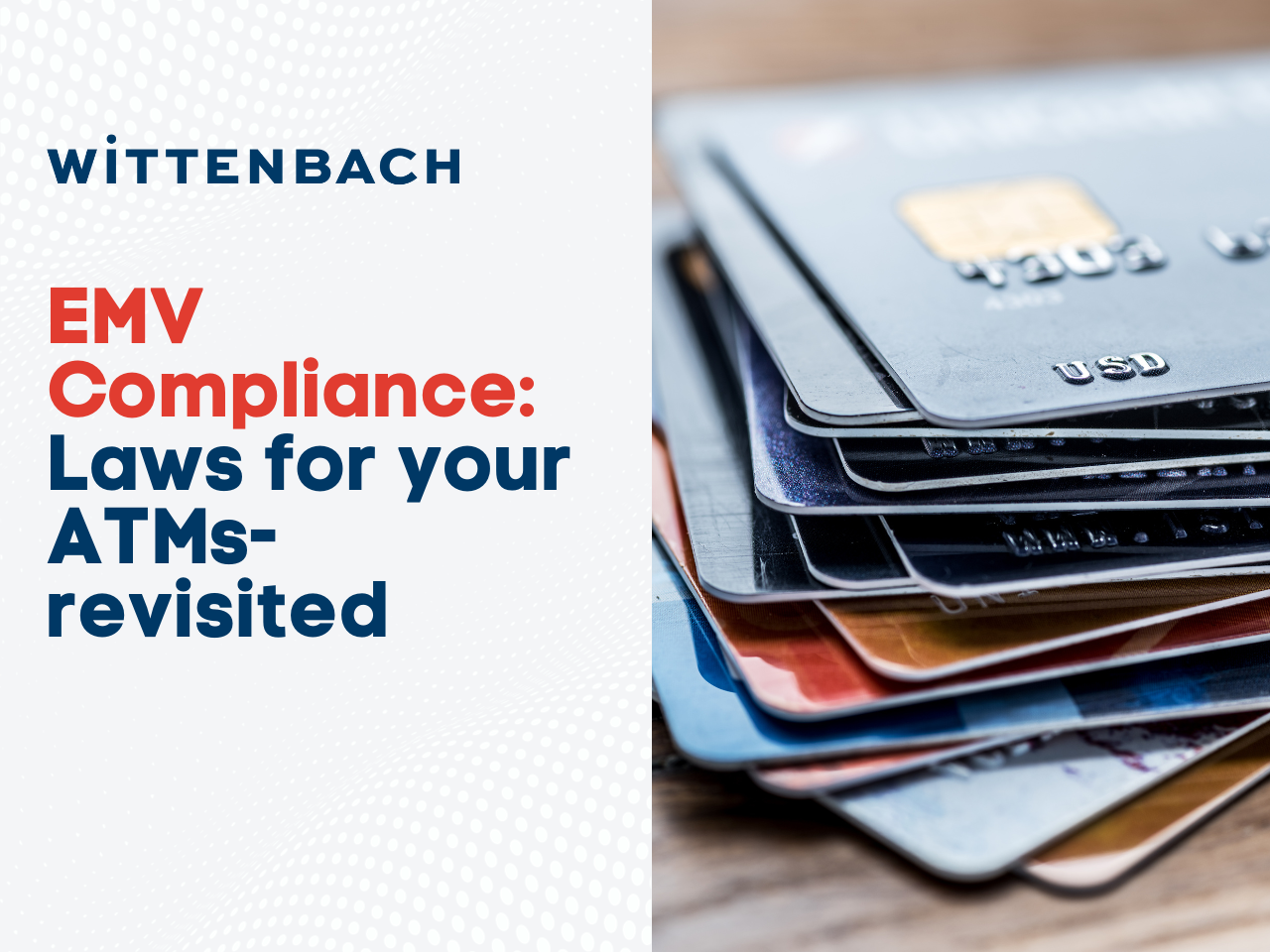EMV compliance is a major reason banks upgrade their ATM or ITM machines. These laws have been around for quite a while, but the root of the standards may have been forgotten. EMV compliance laws for ATMs refer to regulations and standards governing the implementation of EMV (Europay, Mastercard®, and Visa®) technology in Automated Teller Machines (ATMs). EMV is a global standard for credit and debit card transactions that enhances security by using chip cards (smart cards) with embedded microprocessors. The primary aim of these laws and standards are to reduce card fraud, especially in card-present transactions, by replacing the traditional magnetic stripe technology with more secure chip technology.
The specifics of EMV compliance laws for ATMs may vary by country or region, but here are some common elements:
- Liability Shift: Many countries have implemented a liability shift, which means that the party (either the card issuer or the ATM operator) that has not adopted EMV technology is liable for fraud losses. This encourages both parties to upgrade their systems to EMV compliance.
- Chip and PIN: EMV-compliant ATMs typically require users to insert their chip cards into the card reader and enter a Personal Identification Number (PIN) for authentication. This adds an extra layer of security compared to the traditional magnetic stripe and signature method.
- Certification and Testing: ATM operators and vendors are often required to obtain certification for their EMV implementations. This involves testing their hardware and software to ensure compliance with EMV standards.
- Card Issuer Requirements: Card issuers must provide chip-enabled cards to their customers and support EMV transactions. This includes issuing new cards as well as replacing older magnetic stripe cards.
- ATM Hardware Upgrades: ATM operators must upgrade or replace ATM hardware to support EMV chip card transactions. This may include adding new card readers and PIN pads.
- Security Standards: EMV compliance typically involves adhering to specific security standards and encryption protocols to protect cardholder data during transactions.
- Reporting and Compliance Documentation: ATM operators are often required to maintain documentation that demonstrates compliance with EMV standards. This may include reports, logs, and audit trails.
- Education and Training: Employees of ATM operators are typically required to be trained on the EMV technology and security practices.
It’s important to note that EMV compliance laws and standards can change over time, and specific requirements can vary from one region to another. ATM operators should stay updated on the latest regulations and work closely with their card issuers and relevant authorities to ensure compliance.
The implementation of EMV technology in ATMs is a crucial step in enhancing the security of card transactions and reducing the risk of fraud, making it an important consideration for financial institutions and ATM operators.
When did the laws take effect?
The implementation of EMV compliance laws for ATMs took effect at different times in different countries and regions. The timeline for the adoption of EMV technology in ATMs varied, but there were some common milestones:
- Europe: EMV technology was first introduced in the 1990s in Europe. The initial rollout and adoption of EMV standards in ATMs and point-of-sale (POS) terminals began in the late 1990s and early 2000s. Many European countries had effectively transitioned to EMV by the mid-2000s.
- United States: The United States started the transition to EMV technology later than Europe. In the U.S., the liability shift for EMV compliance at ATMs and POS terminals began in October 2015. This means that after this date, the party that had not upgraded to EMV technology became liable for certain types of fraud.
- Other Regions: The adoption of EMV in ATMs and payment terminals varied widely across other regions. Some countries in Asia, Latin America, and other parts of the world adopted EMV earlier, while others did so more gradually.
It’s essential to note that the exact dates for the implementation and enforcement of EMV compliance laws can vary by country and are subject to changes in regulations. The above timeline provides a general overview, but specific dates and requirements should be verified with the relevant authorities or industry associations in each jurisdiction to ensure accurate and up-to-date information.
Who enforces the laws?
EMV compliance for ATMs and payment systems is typically enforced by a combination of industry organizations, card networks, and government regulatory bodies. The specific enforcement authorities can vary by country or region, but here are some common entities involved in enforcing EMV compliance:
- Card Networks (e.g., Visa, Mastercard, American Express): These major payment card networks set the EMV compliance standards and timelines for their respective cards. They often have liability shift policies that encourage ATM operators and merchants to upgrade their systems to EMV technology. Non-compliance can result in financial penalties or increased liability for fraudulent transactions.
- Payment Card Issuers: Card-issuing banks and financial institutions are responsible for issuing EMV-enabled cards to their customers. They may also encourage and work with merchants and ATM operators to ensure the acceptance of chip cards.
- Government Regulatory Bodies: In some countries, government regulatory bodies may play a role in enforcing EMV compliance. They may set specific regulations and standards for payment security, including EMV adoption. Compliance with these regulations may be monitored and enforced by these government agencies.
- Industry Associations: Various industry associations, such as the EMVCo organization, play a role in developing and promoting EMV standards. They may also provide guidance and support for compliance efforts.
- ATM Operators and Acquirers: ATM operators and payment acquirers have a significant responsibility in upgrading their ATM networks to be EMV-compliant. They often work with card networks, card issuers, and industry associations to ensure that their ATMs are up to the EMV standards.
- Independent Compliance Assessors: In some cases, independent assessors or auditors may be involved in evaluating and certifying the compliance of ATMs and payment systems with EMV standards.
The enforcement of EMV compliance often involves a combination of financial incentives, penalties, and oversight to encourage the adoption of more secure payment technology. The specific mechanisms and authorities involved can vary, so it’s essential for ATM operators and financial institutions to understand the requirements and expectations in their jurisdiction and collaborate with the relevant entities to ensure compliance.
It is important to know about the EMV compliance laws to decide to keep or upgrade your ATM fleet. Should you need guidance on ATM or ITM upgrades, Wittenbach’s team of professionals can assist. Contact them for guidance, as they have been consulting, selling, and servicing ATMs for decades.

